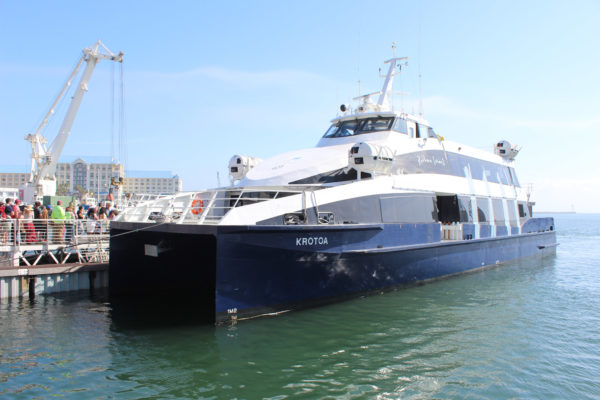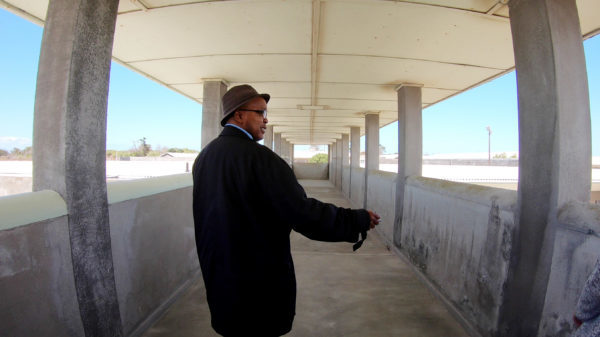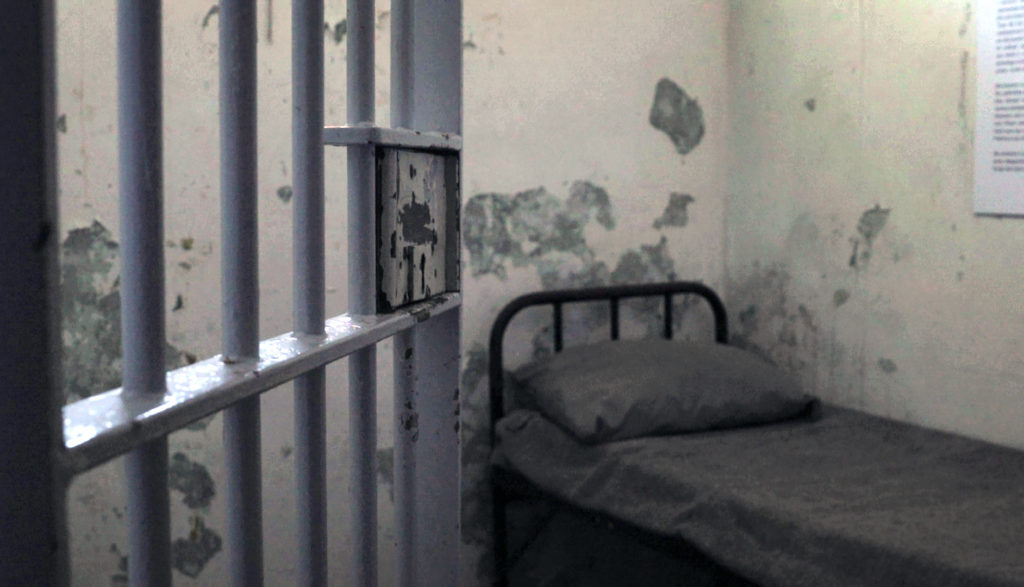Stepping off the ferry, the largely untouched stone structures that make up the old gateway seem desolate, as if from a forgotten era. The wind howls, because here in the middle of the ocean, there is nothing to protect you from the elements. This is Robben Island, one of the most infamous locations in the world. The high walls stand steadfast. The era is not forgotten at all. In fact, it can never be remembered too much.
“It is said that no one truly knows a nation until one has been inside its jails,” Nelson Mandela wrote. I am here to understand more, and this is why visiting Robben Island should be an integral part of every South African’s journey.
My tour guide, Lucky Motsoaledi, has a calmness about him. He shakes my hand warmly, looks me in the eyes. He was imprisoned here between 1980 and 1985.
The memorable tour of the World Heritage Site will take you back as far as the 1400s right through to the political imprisonment era with a visit to the Maximum Security Prison. Ferries to the island depart from the Nelson Mandela Gateway in the heart of the V&A Waterfront. Departure times of the tour varies and are as follows:
Peak Season: 9am, 11am, 1pm, 3pm and 5pm [Summer period]
Off-peak: 9am, 11am, 1pm [Winter period]

With each departure, you can be guaranteed that you will see freedom in a completely new light after.
Robben Island’s history dates back as far as 1400s right through to the 1900s where it was inscribed as a Museum and as a World Heritage Site. Robben Island’s multi-layered history also recognises the Khoi/San i.e. Krotoa, Leper Colony, Xhosa Chiefs, and many ex-political prisoners amongst other historical giants; not forgetting the Islands fauna, flora and wildlife. All these form part of the narration and educational mandate of Robben Island Museum.
The tour is divided into two parts – the Island leg and a tour in the Maximum Security Prison. Visitors will be guided by the tour guides on which leg their respective group will start with.
The Island Tour
The bus tour takes in the historic village as well as key heritage sites, which include:
– The Leprosarium Graveyard. Most people don’t know that the Island was used in the second half of the 19th century to house lepers. They were moved to the colony on a voluntary basis at first because back then, there was no treatment or cure for leprosy. After the Leprosy Repression Act in 1882, those who suffered from the illness were forced to live on the Island, with no option of return.
– The prison house where Robert Sobukwe, leader of the Pan African Congress, was held in isolation. He was exiled to live in utter silence as a form of torture. No one was allowed to speak a word to him, not even the officials. Inmates later developed secret hand signals when walking by as a form of greeting. A closed fist meant hello. An open palm showed a fellow PAC member. Getting caught meant risking severe punishment – for six years, no talking or having someone talk to you.
– The Lime Quarry where prisoners had to work long laborious hours. There is also a Blue Stone Quarry on the Island, which was the hardest form of manual labour on the Island.
– The Male Leper Church
– The 19th century lighthouse
– Second World War fortifications, including big gun emplacements
– The Garrison Church
– The Commissioner’s Residence
– Several shipwrecks
– The Moturu Kramat as well as the Garrison Church (where the famous Mass Wedding on Valentine’s day is held every year)
Maximum Security Prison Tour
Lastly, tourists get a glimpse inside the Maximum Security Prison where thousands of political prisoners were imprisoned. Here, an eerie atmosphere weighs down on you as an ex-political prisoner relays startling details from memory. You look into the extremely small rooms, 2.1 m x 2.7 m, most without so much as a bed. In a grim sort of irony, I realised the dog kennels at the Robert Sobukwe Complex for the canines that patrolled the island are bigger than the prison cells.
I wonder how anyone who lived under such conditions would choose to come back and educate others from their own experience. Mats on the cold floor were the order of the day, alarmingly close to the buckets that had to suffice for the prisoners’ toiletry needs. The tour concludes at the cell that was occupied by Nelson Mandela during his imprisonment on Robben Island. It is surreal to be in these surroundings, you can’t help but feel overwhelmed and you will never look at Table Mountain the same again. From this very spot the mountain feels like hope and light – at the end of a very dark tunnel.

Visitors can now look forward to an even more immersive experience when the Robben Island Museum introduces its planned new walking tours to other sites that are not part of the current tour offering. The Museum wants visitors to experience the various historical sites differently by engaging with it in new ways. This will give everyone a chance to discover the different layers of the Island’s rich history.
There are also additional sites being prepared that will likely form part of the walking tours, including a tour inside the Visitor Centre (where inmates could receive monitored visits and consultations with their legal representatives) and Ou Tronk (the original prison site that was first built in the 1800s). Currently, as part as RIM’s Adaptive Reuse project, various restoration projects are underway with some of them earmarked for inclusion in the Walking Tour.
“What about in 100 years when no more former prisoners are alive, Lucky? Who will lead the tours?” I ask. “We must never stop telling our children the story,” he says. “Never stop telling the story.”
Things to know before you go:
– If you get seasick make sure to take something before the boat ride to the island, the waters can get choppy
– The wind can blow a fair amount. This might influence your choice of clothing, and remember to always take a warm jacket
– There is only one stop where visitors can buy refreshments. Pack your own water and snacks. There is a refreshment shop on the Island for a quick take-away snack and drinks during the short recess
– You will walk a short distance (on the general tour). Of course, once the Maximum Security Prison tour commences, that will mean a longer stretch of walking. Be sure to wear comfortable shoes
– You may take pictures with a phone, but professional cameras, tripods and drones need to get special permission beforehand
Pictures: Cape Town Etc

